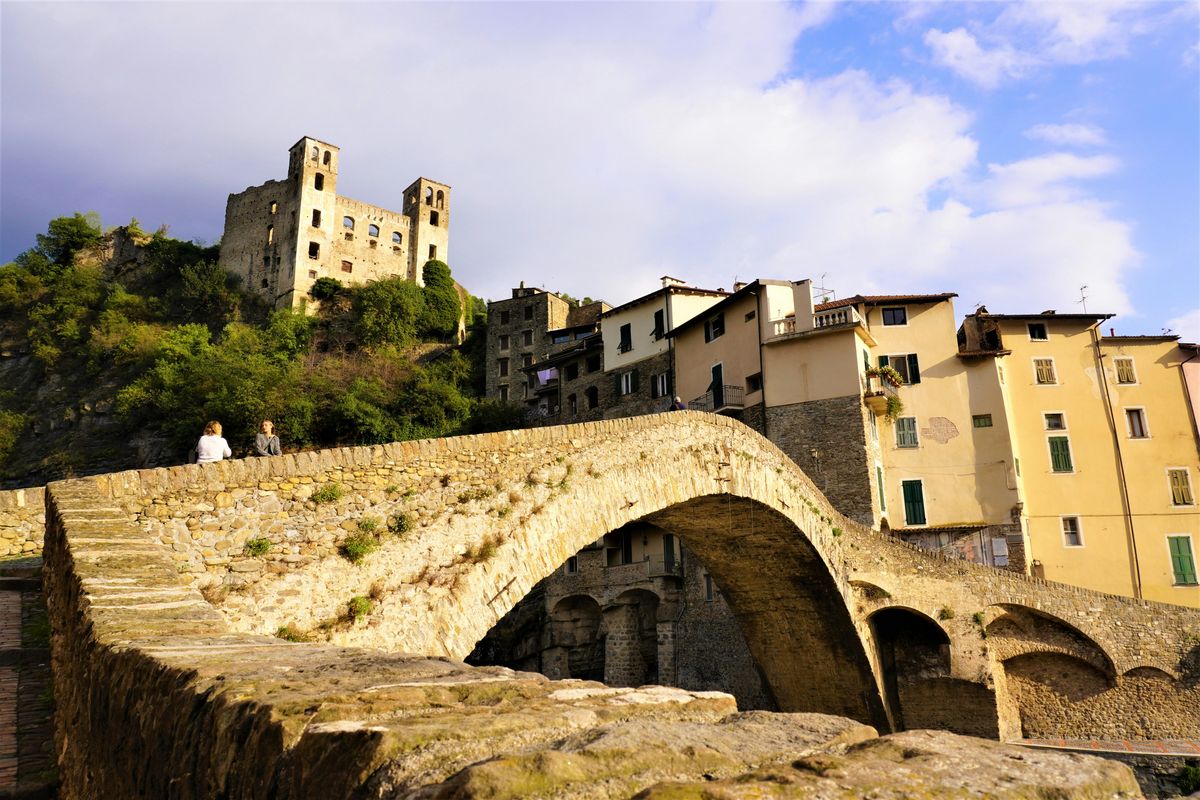Exploring the Historical Heart of Óbidos

Strolling Through Time on Cobblestoned Streets
The allure of Óbidos is palpable as you meander through its cobblestoned streets, each stone bearing witness to the countless footsteps of history. The town’s whitewashed homes, adorned with brightly painted trim, offer a picturesque backdrop to the traveler’s journey, evoking the essence of a fairy-tale setting. The dramatic medieval castle stands as a sentinel, overseeing the ancient walled city and adding to the enchantment that captivates visitors.
the town is a mosaic of delightful surprises. Hidden alleyways beckon, leading to serene squares that promise a moment of tranquility away from the bustling streets.
- Wander through the labyrinthine streets
- Discover the grandmothers selling Ginjinha
- Admire the street art murals
- Uncover hidden squares and alleyways
The charm of ‘d3bidos is not just in its visual appeal but also in the stories and lives that have unfolded within its walls. Each corner turned is an opportunity to delve deeper into the town’s rich tapestry, where the past and present converge in a harmonious blend.
The Architectural Marvel of Santa Maria Church
Nestled within the ancient walls of Óbidos, the Santa Maria Church is a testament to Portugal’s rich architectural heritage. Its intricate design is a harmonious blend of Late Gothic and Manueline styles, reflecting the nation’s Golden Age of Discovery. The church’s chambers are adorned with opulent details that capture the essence of this era.
The Santa Maria Church is not just a place of worship but a historical monument that embodies the spirit of Portuguese architecture during its most celebrated period.
Visitors to the church will find themselves immersed in a space where every corner tells a story of the past. The Manueline style, characterized by its ornate and flamboyant elements, is particularly evident in the church’s grandiose doorways and windows. This style, which flourished in the early 1500s, is a unique Portuguese contribution to architectural history, often associated with the country’s maritime explorations.
While the church’s exact construction date remains a subject of historical inquiry, its enduring presence continues to awe both locals and tourists alike. It serves as a cultural beacon, inviting all who enter to ponder the artistic and historical narratives etched into its stone.
A Literary Haven: Óbidos as a UNESCO City of Literature
In the heart of ‘d3bidos, literature is not just a pastime; it’s a celebrated part of the town’s identity. Recognized as a UNESCO City of Literature, ‘d3bidos has transformed its historical spaces into a haven for book lovers. The town’s commitment to literary culture is evident in its numerous bookshops and literary events that dot the calendar year.
- Literary Festivals: Annual events that attract authors and readers from around the globe.
- Unique Bookshops: From a converted church to a market-turned-bookstore, each offers a unique browsing experience.
- Literary Residencies: Programs that invite writers to live and create within the town’s inspiring walls.
- Educational Workshops: Engaging the community and visitors in the literary arts.
Embracing its literary heritage, ‘d3bidos fosters a vibrant atmosphere where the written word is revered and the spirit of creativity is nurtured. This dedication not only enriches the lives of its residents but also offers a unique cultural experience for travelers.
Whether you’re a voracious reader or simply appreciate the charm of a good book, ‘d3bidos’s literary landscape is sure to captivate. The town’s love for books is a testament to its rich cultural tapestry, weaving together history, art, and the timeless joy of reading.
Museum of Óbidos: A Treasure Trove of History
The Museum of Óbidos, nestled on the bustling Rua Direita, is a portal to the past, offering visitors a chance to immerse themselves in the rich tapestry of Óbidos’ history. Its collections are as diverse as they are historic, with tranquil gardens providing a serene backdrop to the artifacts within.
The museum’s significance is further amplified by Óbidos’ designation as a UNESCO City of Literature, a testament to the town’s cultural richness.
While the museum’s size may not rival that of larger institutions, its quality is undeniable. The collection boasts an impressive array of items that tell the story of Óbidos through the ages. Here’s a glimpse of what you can expect:
- Medieval artifacts that reveal the town’s ancient roots
- Religious art reflecting the deep spiritual history of the region
- Rare books and manuscripts, underscoring the literary prestige of Óbidos
- Contemporary exhibitions that connect the past with the present
Each exhibit is carefully curated to provide a comprehensive understanding of the town’s heritage. The museum is not just a repository of objects; it is a celebration of Óbidos’ journey through time.
Savoring Óbidos’ Local Delights and Surrounding Wonders

Traditional Portuguese Cuisine: A Gastronomic Journey
The culinary landscape of Óbidos is a reflection of Portugal’s rich gastronomic heritage, offering an array of traditional dishes that are both hearty and flavorful. Visitors can indulge in a variety of local specialties that showcase the best of Portuguese cuisine.
- Feijoada: A robust meat and bean stew that warms the soul.
- Caldo Verde: A comforting soup made with potato, onion, olive oil, kale, and sausage.
- Porco Preto: Succulent pork from the Alentejo region, known for its distinctive taste.
- Malasada: Sweet, deep-fried bread dusted with sugar, a treat not to be missed.
- Polvo à Lagareiro: Tender roasted octopus paired with garlic, herbs, and potatoes.
Here, amidst the charm of this ancient town, savor a lunch infused with local flavors, offering a delightful taste of traditional Portuguese cuisine.
For those eager to delve deeper into the culinary arts, Óbidos provides the perfect setting for an authentic cooking class. Learn from knowledgeable chefs who are passionate about their craft, and take the opportunity to cook up a storm using fresh, local ingredients. The experience is not just about the food; it’s a journey through the culture and traditions that make Portuguese cuisine truly unique.
Beyond the Walls: Day Trips to Nearby Medieval Villages
Venturing beyond the fortified walls of ‘d3bidos, one discovers a realm of medieval charm awaiting in the surrounding Portuguese countryside. Each village offers a unique glimpse into the past, with their own stories etched into ancient stones and whispered through narrow alleyways.
- Tomar – A medieval village in the Centro region, home to the Convent of Christ and historic fortresses.
- Viseu – A lesser-known city celebrated for its rich food and wine culture.
- ‘c9vora – The capital of Alentejo, often referred to as the ‘Museum City’ for its plethora of historical sites.
- Marv\u00e3o and Monsaraz – Hilltop villages in Alentejo, known for their stunning views and whitewashed buildings.
- Bragan\u00e7a – A mountainous village near the Spanish border, offering a serene escape.
While the heart of ‘d3bidos captivates with its historical allure, the nearby villages beckon travelers with the promise of less-trodden paths and hidden cultural treasures.
For those seeking an authentic experience, these day trips are a must. Availability for accommodations can be scarce, especially in locations marked with an asterisk (*), indicating the presence of a hostel. It’s advisable to book promptly to secure a stay in these enchanting locales. And for a truly unique journey, consider the private tours that include visits to F\u00e1tima, the Monastery of Batalha, Nazar\u00e9, and ‘d3bidos, as they offer a personalized exploration of Portugal’s rich heritage.
The Igreja da Misericórdia and Its Azulejo Tiles
The Igreja da Misericórdia stands as a testament to the enduring beauty of Azulejo, the traditional Portuguese tilework that has adorned buildings for centuries. These blue-hued ceramic tiles tell stories of history, religion, and culture, capturing the eyes and hearts of visitors.
Nestled within the walls of Óbidos, the Igreja da Misericórdia is more than just a place of worship; it is a canvas showcasing the evolution of Azulejo art.
The Azulejo tiles of the Igreja da Misericórdia are not only decorative but also serve as historical records. Here’s a brief overview of their significance:
- 15th Century: Introduction of Azulejo to Portugal, with Moorish influences.
- 16th Century: Expansion in use, depicting religious and secular themes.
- 17th Century: Increase in complexity, with more detailed narrative scenes.
- 18th Century: The great earthquake of 1755, after which Azulejo became a tool for documenting history and rebuilding efforts.
Visitors to Óbidos should not miss the opportunity to engage with this unique art form through the interactive Azulejos Workshop. It’s a chance to witness firsthand the meticulous craftsmanship that goes into creating these timeless pieces.
Finding Serenity in Óbidos’ Public Gardens and Castles
The tranquility of ‘didos is perhaps best experienced in its public gardens and the majestic castle that has stood as a sentinel over the town for centuries. These serene spots offer a peaceful retreat from the bustling streets and are perfect for leisurely strolls or quiet contemplation.
- Public Gardens: A testament to the town’s historical elegance, the gardens are meticulously maintained, featuring native flora and designed pathways that invite visitors to wander and admire.
- Castle Grounds: The castle’s grounds provide a panoramic view of ‘didos and the surrounding countryside. The well-preserved fortifications and towers echo the tales of a bygone era.
Embrace the calmness of the gardens and the castle’s grandeur as you reflect on the rich tapestry of ‘didos’ past.
While the castle itself is a highlight, the surrounding gardens are not to be overlooked. They offer a unique blend of natural beauty and historical significance, making them an integral part of the ‘didos experience.
Whether you’re a history enthusiast, a lover of literature, or simply in search of a picturesque escape, this walled town is a treasure trove of cultural delights. As one of the most famous medieval villages in Portugal, it may get busy with daytrippers, but the charm of Óbidos remains undiminished, inviting visitors to step back in time and create memories that will indeed last a lifetime.
Frequently Asked Questions
What makes Óbidos a must-visit destination in Portugal?
Óbidos is a quintessential Portuguese town known for its medieval architecture, cobblestoned streets, and historical significance. It offers a unique glimpse into Portugal’s past with attractions like the 12th-century Santa Maria Church, the Museum of Óbidos, and the UNESCO City of Literature designation. The town is also famous for its local cuisine and charming, whitewashed houses, making it a perfect day trip from Lisbon.
Can you recommend any nearby villages to visit after Óbidos?
Certainly! After exploring Óbidos, you can venture to other picturesque medieval villages such as Ericeira, known for its cliffside views and fishing culture; Monsanto, famous for its granite boulders; and Tomar, with its notable churches and fortresses. Each village offers a unique experience and a chance to see a side of Portugal that is rich in history and natural beauty.
What are some local delicacies to try in Óbidos?
When visiting Óbidos, be sure to savor traditional Portuguese cuisine that includes dishes like bacalhau (salted cod), various seafood stews, and pastéis de nata (custard tarts). The town is also known for its café culture, so don’t miss the opportunity to enjoy a coffee paired with some local pastries in one of the quaint cafes.













